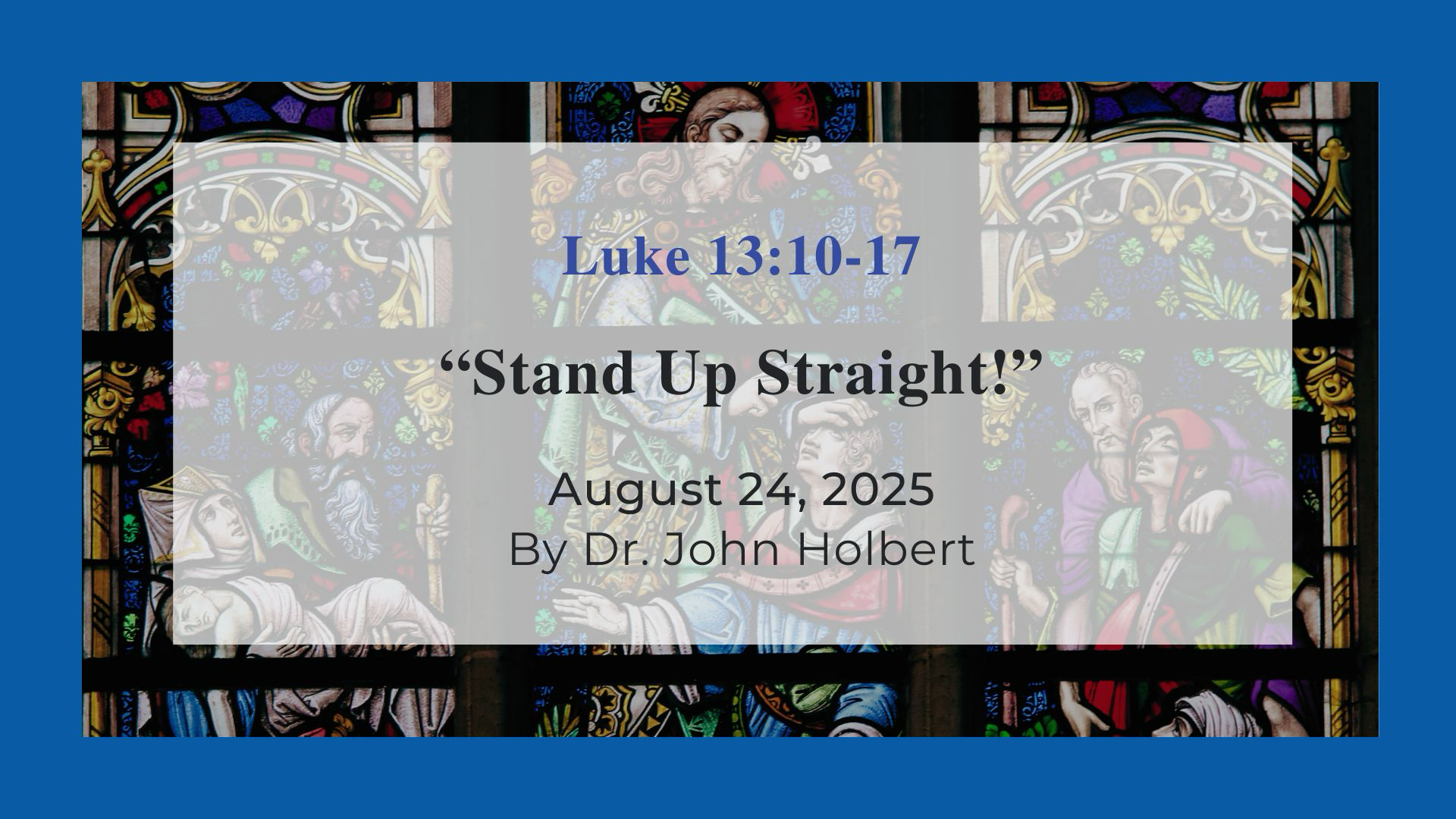Stand Up Straight! Reflections on Luke 13:10-17, Pentecost 11, Year C
by John C. Holbert on Saturday, June 7, 2025

In the midst of two rather famous stories of the need for repentance, Luke tells a tale apparently of his own devising, because it is found in no other Gospel. The subject is the healing on the Sabbath of a woman who has been cruelly bent over for eighteen years. On the surface, the story has little to do with repentance, but a closer look may demonstrate that Luke knows precisely what he is doing; he is certainly a master literary stylist.
The two repentance stories are familiar. The first recounts the monstrousness of the Procurator Pontius Pilate, how he “mingled the blood of Galileans with their sacrifices,” a grim recital of Pilate’s penchant for cruelty, how he regularly sought violent solutions to problems his Jewish citizens too often presented. Josephus writes several times concerning this feature of the Roman leader, a fact that makes Pilate’s later behavior with Jesus, his reticence to act against him, particularly ironic and puzzling. However, Luke is less concerned here with Pilate’s character than he is for the need to repent, because if the crowd which is his audience assumes that those Pilate murdered were somehow particularly deserving of their deaths, due to their terrible sin, and that those listening were somehow safe from such death being themselves not nearly as sinful, they are quite wrong. If they do not repent, “they will die in the same way” (Luke 13:1-3).
Also, Luke tells the story of a terrible collapse of a tower, near the pool of Siloam in Jerusalem, that claimed the lives of eighteen people. Do the listeners imagine that they, as great sinners, deserved their deaths, while this listening crowd is safe? No, says Jesus, and repeats the warning of vs.3 at vs.5: “If you do not repent, you will die in the same way.” Then after pointing to the familiar parable of the unproductive fig tree (Luke 13:6-9), and using it to suggest the need for patience in the face of its lack of figs—“Perhaps it will bear fruit in the coming year,” says the careful gardener—Luke then tells his story of the bent-over woman.
The setting is vague. “He was teaching on the Sabbath in one of the synagogues” (Luke 13:10). “Look! A woman was present who for eighteen years had a spirit of weakness. She was all bent over and was unable to straighten up” (Luke 13:11). We will later learn that the “weakness” had its source in Satan, Jesus’ perpetual adversary (Luke 13:16). “When Jesus saw her he called out to her, ‘Woman, you have been freed of your weakness” (Luke 13:12). After placing his hands on her, “immediately she straightened up and glorified God” (Luke 13:13). One obvious connection between this story and the previous tales of the need for repentance is found in the use of the number 18: 18 deaths at the tower of Siloam prefiguring the 18 years of the woman’s illness. Yet, a more subtle connection may be found in what occurs next.
“The ruler of the synagogue was indignant (or “irritated”) because Jesus had healed on the Sabbath” (Luke 13:14). The issue of Sabbath work—healing can be seen as a work—has come up before in Luke’s Gospel, and is proscribed in many rabbinic texts. Note that the Jewish leader does not speak directly to Jesus concerning his Sabbath transgression, but spoke only to the crowd about the need strictly to follow the laws of the Sabbath: “He responded by telling the crowd that there were six days on which one must work” (Luke 13:14). One might call this an example of “deflected anger,” or in psychological jargon, an instance of “triangulation”. But Jesus is far more direct. “Hypocrites,” he shouts! “You untie your ox on Sabbath, or take your donkey from the stall and lead it to water, don’t you?” (Luke 13:15). Well, what about this woman? “Is it not necessary to relieve her of her bondage on the Sabbath day?” (Luke 13:16).
In Luke 6:9 Jesus had healed a man with a withered hand on the Sabbath, and challenged the scribes and the Pharisees in attendance concerning whether one could do good or evil, give life or destroy it. But here the charge is “hypocrisy,” because if allowance is made for the loosing and watering of animals on Sabbath, how much more should the “loosing” of a human be allowed. Jesus goes even further: “it is necessary,” he says, “to heal on the Sabbath!” Only hypocrites would employ strict rules to deny a needed healing. And that, of course, leads us to the question of repentance. The implication is clear: these Jewish leaders are in desperate need of repentance from their hypocrisy, the same need that the synagogue crowd has for repentance.
And what about us? Do we too often judge the evils of others, and announce they only got what they deserved, while we deny the “logs in our own eyes?” And do we hide behind long-held and long-treasured traditions to evaluate and decry the behaviors of others, while we act in ways that may only honestly be called sinful, if we look more carefully at ourselves? All need to heed the call for repentance issued by Jesus, lest we join the victims of Pilate, the dead under the rubble of the Siloam tower, or the hypocrisy of the leaders of the synagogue. If we do, we might be able to hear the saying Luke will later provide concerning the return of the Son of Man (or “the human one”), and join the woman healed: “when these things begin to happen, stand up straight, lift up your heads, for the time of your liberation has come” (Luke 21:28).
